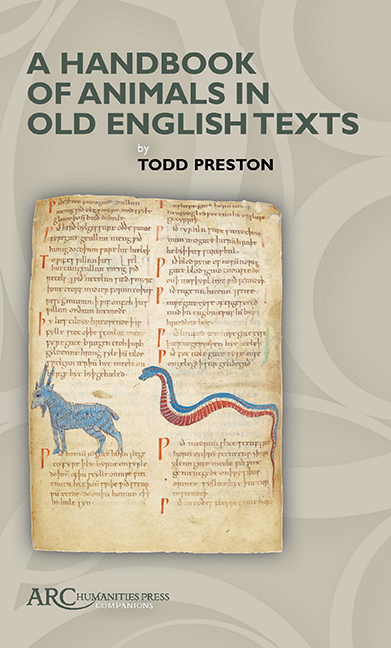Summary
For the people of early medieval England, animals were a pervasive and significant presence in their daily lives. Whether these interactions were intentional, as in the milking of a goat, or not, as in catching sight of a wheeling wild raptor over a field, animals were never far from the human experience of the time. Domestic animals provided an array of the products of everyday life, from food to medicine to clothing, and the procurement of these goods required intimate contact with these creatures. Even wild animals were closer at hand, as rural living was the norm, and even those at the pinnacle of society would surround themselves with helper-animals such as dogs and raptors in search of woodland beasts as prey. The turn of the first millennium would also see a shift to large-scale marine fishing, literally broadening the horizons of the early medieval English. Nearly every aspect of early medieval life on the island was in some way touched by animals.
As difficult as it is to understand the alterity of the early Middle Ages from a modern perspective, grasping how and what the people of the time thought about animals is harder still. The stratum of society having the most direct contact with the most animals, including the farm workers, laborers, and game hunters, left no written record of their experiences. Texts that do survive mediate the animal-contact experience through their respective lenses of church, state, or fictions in poetry and prose. Poets and clerics largely turned to animals as metaphors or set dressing for tales of human endeavours. Historians and the state primarily referenced animals as resources, if at all. Much of the knowledge that can be gleaned from these texts is indirect, glimpsed sidelong through the thicket of the anthropocentric main narrative.
Despite the difficulty in ascertaining the status of animals in the medieval English environment, and especially the conception of them by their contemporary human observers, the expanding field of animal studies has begun to investigate the nature of the connection between the people and animals of the period more comprehensively. The core of animal studies often wrestles with the essential contradiction at the heart of the human–animal relationship. On the one hand, animal studies investigates the continuities between the animal and the human.
- Type
- Chapter
- Information
- A Handbook of Animals in Old English Texts , pp. 1 - 7Publisher: Amsterdam University PressPrint publication year: 2022

